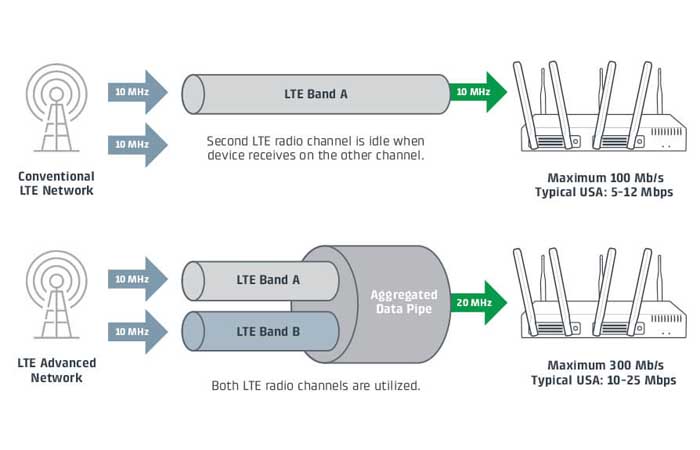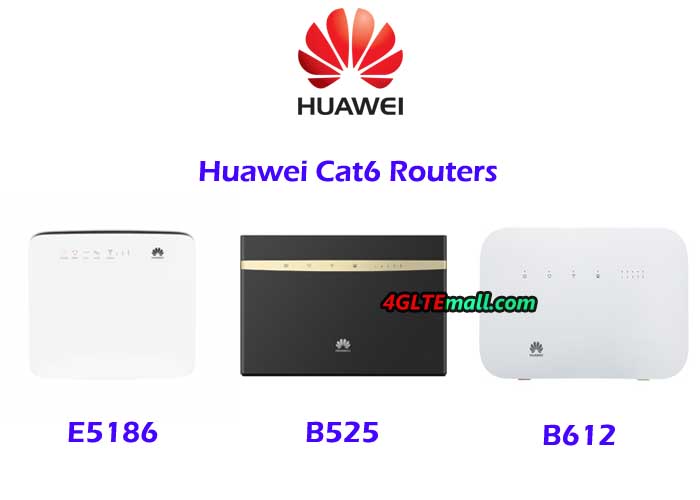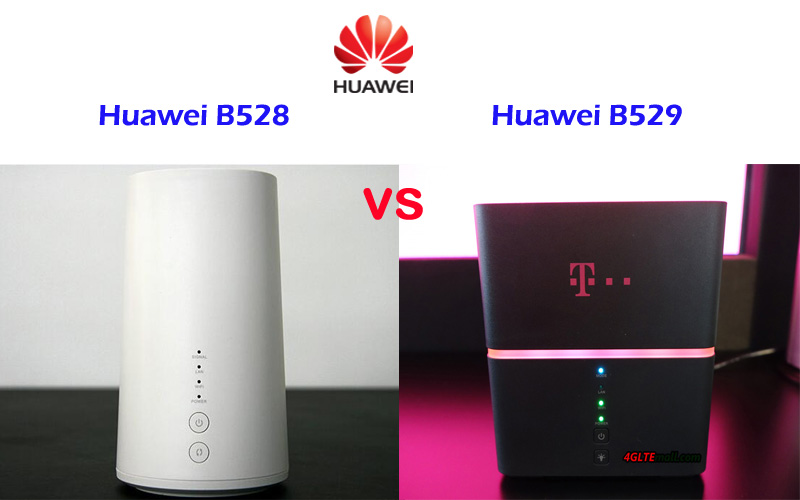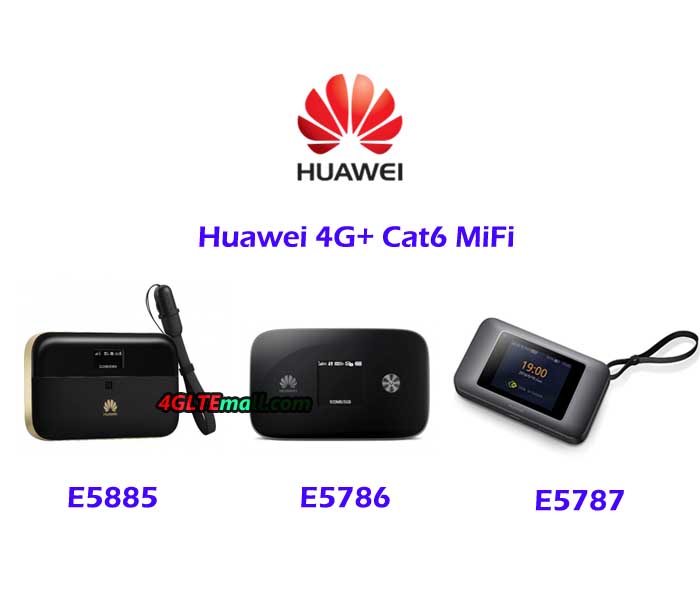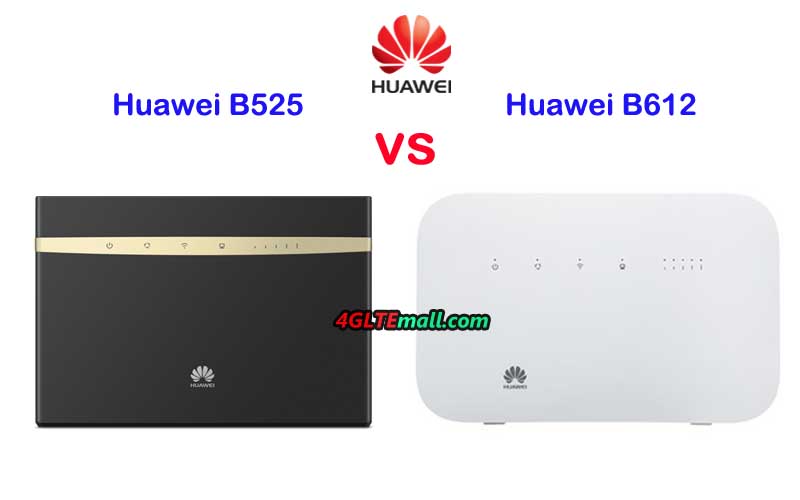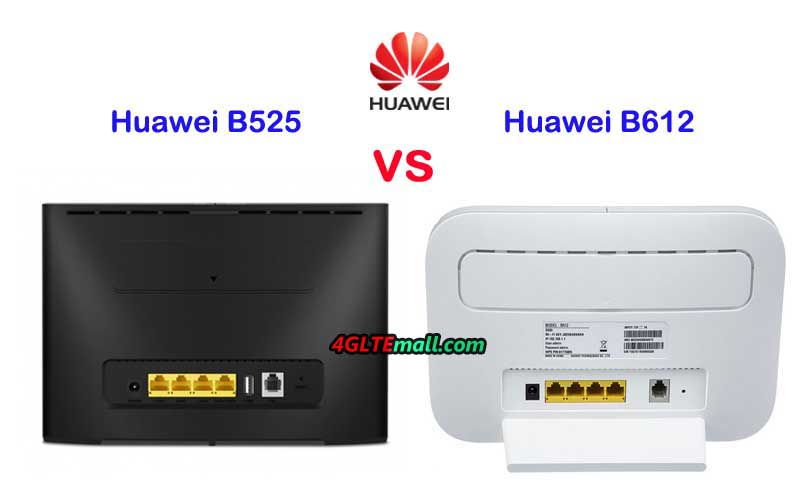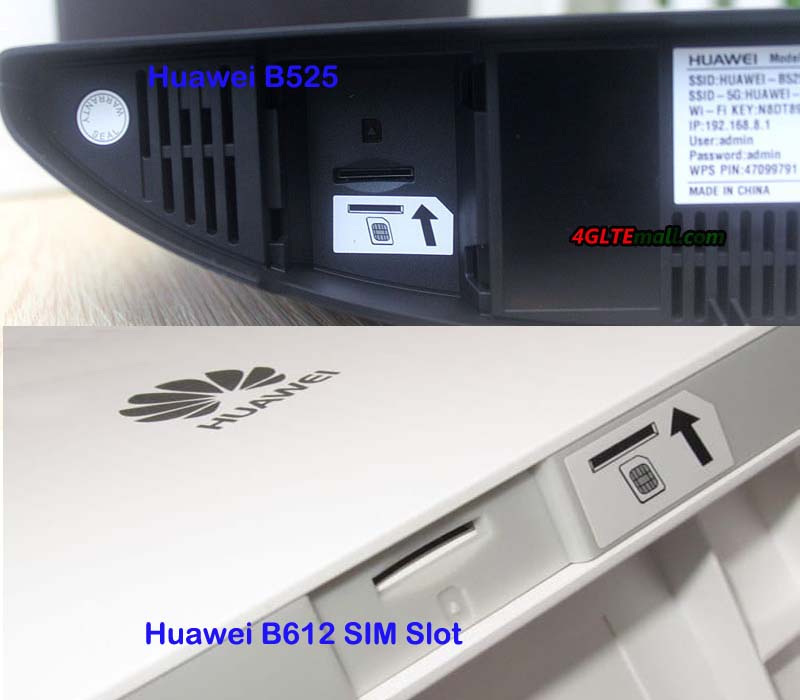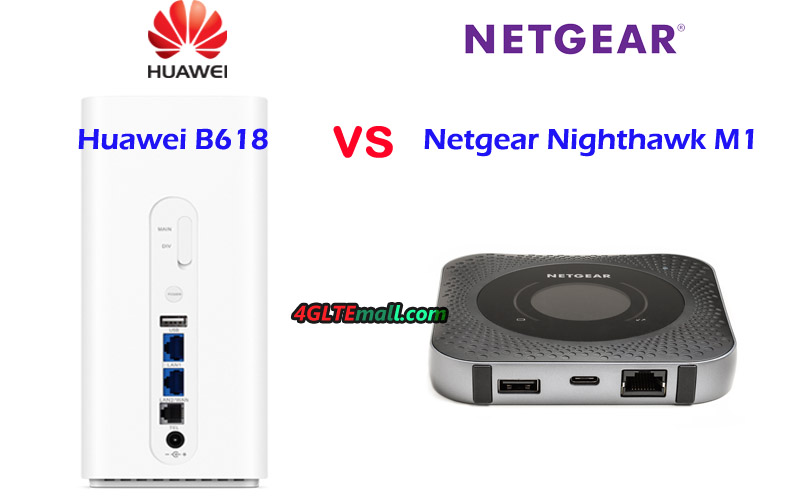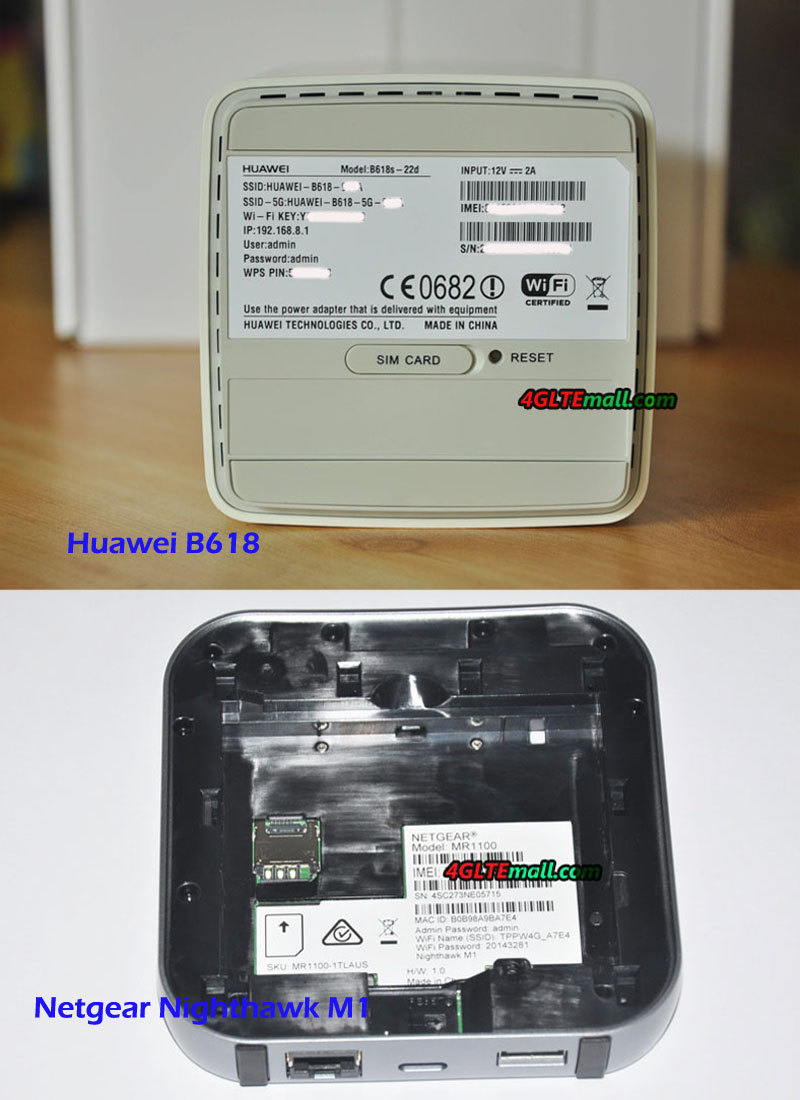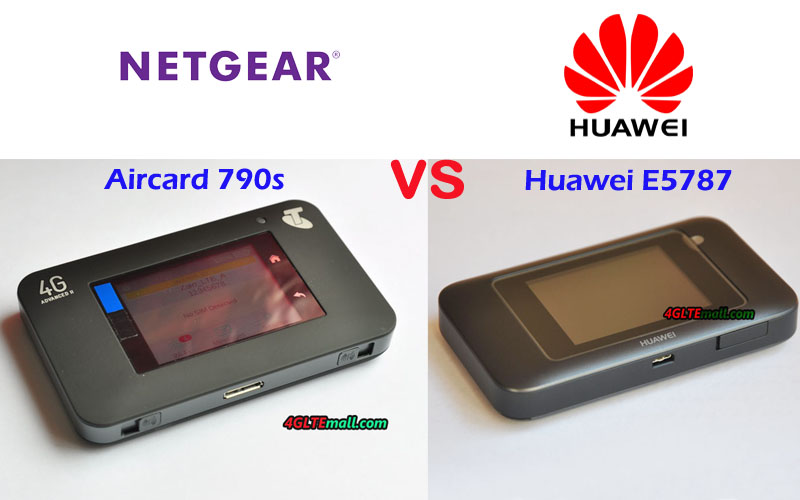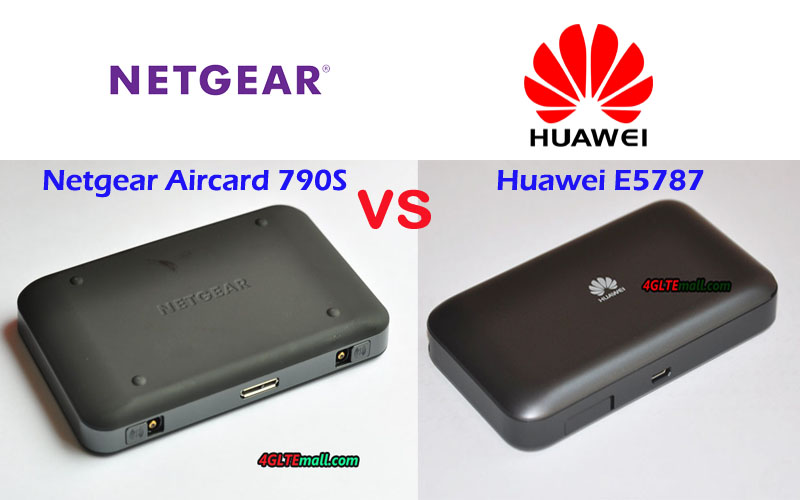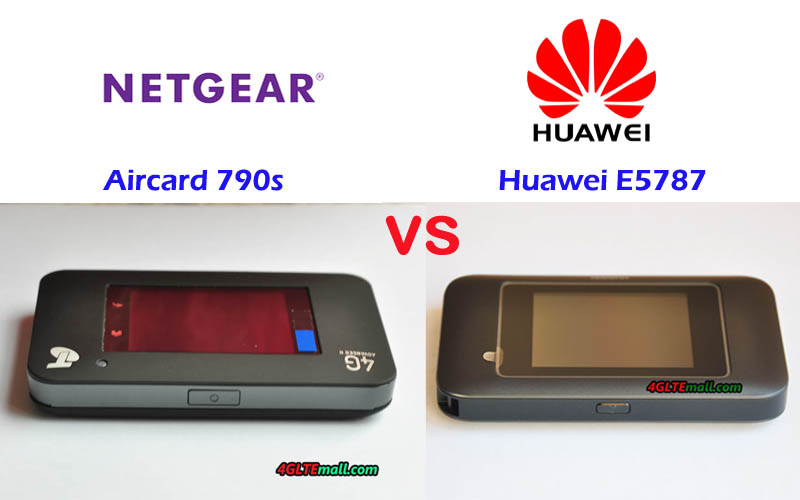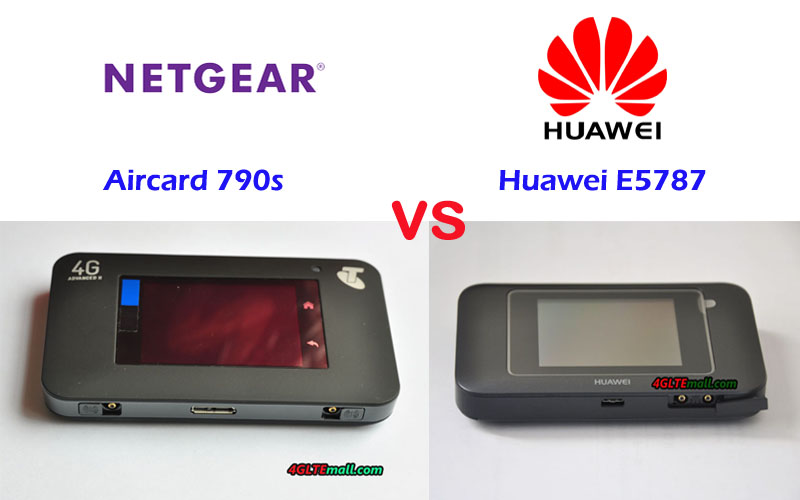4G WIFI ROUTER
-
[PR]
×
[PR]上記の広告は3ヶ月以上新規記事投稿のないブログに表示されています。新しい記事を書く事で広告が消えます。
-
Huawei 4G+ Cat6 Routers and 4G+ Cat6 MiFi List
As the top network equipment supplier from China, Huawei had presented many Cat6 routers to the market for worldwide network providers. The Huawei Cat6 routers include stationary WiFi router and 4G+ Cat6 MiFi. The stationary WiFi routers usually have Ethernet ports to connect PC for desktop use and SIM card slot so as to connect with WAN networks. They usually don’t have a built-in or exchangeable battery and get power supply from the adapter. The 4G+ Cat6 MiFi are usually in small size which could be easily put in pocket or handbag for outdoor use. They usually have a built-in battery or removable battery like the smartphone, and the battery usually could be rechargeable. Then what is cat6 router?
What is Cat6 router?
Cat6 router is a kind of wireless terminals with LTE advanced standard, bringing higher speeds and more capacity to LTE networks around the world. As the typical Cat6 feature, multiple LTE carriers can be combined to achieve greater total bandwidth in a process called carrier aggregation (CA). Carrier aggregation plays a fundamental role in particular when the mobile device operates in a congested network and therefore the available band is shared among many devices.
With CA, the 4G+ Cat6 router could reach a maximum speed of 300Mbps. The Cat6 router LTE with this technology could help user to achieve faster speed and better surfing experience. We list the Huawei 4G+ Cat6 Router and Huawei 4G+ Cat6 MiFi with their specs and features. From the comparison, you may find the best Cat6 Router.
Huawei 4G+ Cat6 Router list for Desktop use:
Model Huawei B612 Huawei B525 Huawei E5186 Product type Huawei WiFiRouter with Ethernet port Huawei WiFi Router with Ethernet port LTE WiFi Router Category LTE Cat6 Router LTE Cat6 router LTE Cat6 Router Chipset HiSilicon LTE Cat6 Chipset HiSilicon LTE Cat6 Chipset HiSilicon LTE Cat6 Chipset Data rates DL 300Mbps/UL 50Mbps DL 300Mbps/UL 50Mbps DL 300Mbps/UL 50Mbps Supported 4G LTE frequency bands Huawei B612s-25d: B1/B3/B7/B8/B20/B38/B40/B41/B42/B43 Huawei B612s-51d: B2/B4/B5/B7/B41 Huawei B525s-23a: Band 1/3/7/8/20/32/38 Huawei B525s-65a: Band 1/3/4/5/7/8/20/19/26/28/32/38/40/41 Huawei E5186s-22a: Band 1/3/7/8/20/38 Huawei E5186s-61a: Band 3/7/28/40 WLAN 802.11 b/g/n/ac, single-band 2.4GHz 802.11a/b/g/n/ac, dual-band 2.4GHz & 5GHz 802.11a/b/g/n/ac, dual-band 2.4GHz & 5GHz Max supported users 32 users 64 users 64 users MIMO 4 x 4 MIMO 2 x 2 MIMO 2 x 2 MIMO Connector for external antenna Two, SMA-female jacks Two, SMA-female jacks Two, SMA-female jacks Buy Antenna Huawei B612 external antenna Huawei B525 external antenna Huawei E5186 external antenna App management Huawei Hilink APP Huawei Hilink APP Huawei Hilink APP SIM Size Micro SIM Micro SIM Micro SIM Battery NO NO NO Dimensions 240 × 155 × 78 mm 163 x 52 x 226 mm 190 mm × 200 mm × 32 mm Interfaces * 3 x LAN port(RJ45) * 1 x LAN/WAN port (RJ45) * 1 x telephone port(RJ11) * Two external LTE antenna ports (SMA-female) * One micro-SIM card slot * 1 x USB 2.0 port * 3 x LAN port(45) * 1 x LAN/WAN port (45) * 1 x telephone port(RJ11) * Two external LTE antenna ports(SMA-female) * One micro-SIM card slot * 1 x USB 2.0 port * 3 x LAN port(45) * 1 x LAN/WAN port (45) * 2 x telephone port(RJ11) * Two external LTE antenna ports (SMA-J1.5) * One micro-SIM card slot * 1 x USB 2.0 port Datasheet Huawei B612 Datasheet(PDF) Huawei B525 Datasheet(PDF) Huawei E5186 Datasheet(PDF) User Manual Huawei B612 User Manual(PDF) Huawei B525 User Manual(PDF) Huawei E5186 User Manual(PDF) Other features Firewall, CS Voice, VoIP, VoLTE, IPv6/IPv4 dual stack, NAT, DHCP, VPN, DMZ, UPnP, ALG, Firewall, CS Voice, VoIP, TR069 Remote Management, HTTP Online Upgrade, QoS, USB Share, UPnP, IPV6, DLNA, Fax, Print, VPN Firewall, CS Voice, VoIP, TR069 Remote Management, HTTP Online Upgrade, QoS, USB Share, UPnP, IPV6, DLNA, Fax, Print, VPN Firmware download Huawei B612 firmware Huawei B525 firmware Huawei E5186 firmware Driver Huawei B612 driver Huawei B525 driver Huawei E5186 driver Reviews Huawei B612 Review Huawei B525 Review Huawei E5186 Review Price/USD 399.00USD 259.00USD 259.00USD Huawei also present the Cat6 WiFi router in the shape of Cube, they look cool in design like fashion furniture:
Model Huawei B529s-23a Huawei B528s-23a Product type LTE WiFi Cube LTE WiFi Cube Category LTE Cat.6 WiFi Router LTE Cat.6 WiFi Router Chipset HiSilicon LTE Cat6 Chipset HiSilicon Balong 722 Data rates DL 300Mbps/UL 50Mbps DL 300Mbps/UL 50Mbps Supported 4G LTE frequency bands Band 1/3/7/8/20/32/38 LTE B1, B3, B7, B8, B20, B32, B38 WLAN 802.11a/b/g/n/ac, dual-band 2.4GHz & 5GHz 802.11a/b/g/n/ac, dual-band 2.4GHz & 5GHz Max supported users 64 users 64 users MIMO 2 x 2 MIMO 2 x 2 MIMO Connector for external antenna Two, TS-9 jacks Two, TS-9 jacks Buy Antenna Huawei B529 External antenna Huawei B528 External Antenna App management Huawei Hilink APP Huawei Hilink APP SIM Size Micro SIM Micro SIM Battery Yes, non-removable 3000mAh battery NO Dimensions 120 x 120 x 125mm 105 mm x 90mm x 181 mm Interfaces * 1 x power adapter port * 1 x LAN port(45) * Two external LTE antenna ports (TS-9) * One micro-SIM card slot * 1 x Gigabit LAN (RJ45) * 1 x RJ11 (VoIP) Datasheet Huawei B529 Datasheet Huawei B528 Datasheet User Manual Huawei B529 Manual Huawei B528 Manual Other features DHCP Server, DNS RELAY and NAT IPv4 /IPv6 dual stack Firmware download Huawei B529s-23a firmware Huawei B528 firmware Driver Huawei B529s-23a driver Huawei B528 Driver Reviews Huawei B529 Review Huawei B528s-23a Review Price/USD 299.00 399.00 Huawei 4G+ Cat6 MiFi list:
Model Huawei E5885Ls-93a Huawei E5787 Huawei E5786 Product type LTE Mobile Hotspot with Ethernet port LTE Mobile Hotspot LTE Mobile Hotspot Category 4G+ Cat.6 MiFi 4G+ Cat.6 MiFi 4G+ Cat.6 MiFi Chipset Hisilicon LTE Cat6 chipset HiSilicon LTE Cat6 Chipset (Cortex A9 Processor) HiSilicon LTE Cat6 Chipset Data rates DL 300Mbps/UL 50Mbps DL 300Mbps/UL 50Mbps DL 300Mbps/UL 50Mbps Supported 4G LTE frequency bands * FDD-LTE Band 1/2/3/4/5/7/8/19/20/28 * TDD-LTE: Band 38/40/41/42 * Huawei E5787s-33a: Band 1/3/5/7/8/20 * Huawei E5787Ph-67a: Band 1/3/5/7/8/28 * Huawei E5786s-32a: Band 1/3/5/7/8/20/38 * Huawei E5786s-62a: Band 1/3/8/28 * Huawei E5786s-63a Band 1/3/7/8/28/40 WLAN 802.11a/b/g/n/ac, dual-band 2.4GHz & 5GHz 802.11a/b/g/n/ac, dual-band 2.4GHz & 5GHz 802.11a/b/g/n/ac, dual-band 2.4GHz & 5GHz Max support users 32 users 10 users 10 users MIMO 2 X 2 MIMO 2 X 2 MIMO 2 X 2 MIMO Connector for external antenna No connector Two, TS-9 jacks Two, TS-9 jacks Buy Antenna N/A Huawei E5787 external Antenna Huawei E5786 external Antenna App management Huawei Hilink APP 3.0 Huawei Hilink APP Huawei Hilink APP SIM type Micro SIM Micro SIM Micro SIM Battery Non-removable, 6400mAh Removable, 3000mAh 3000mAh Dimensions 112.00 x 69.20 x 23.00mm 109.00 x 58.00 x 7.50mm 106 x 66 x 15.90mm Ethernet Port On port for WAN/LAN port(RJ-45) No No Datasheet download Huawei E5885 Datasheet Huawei E5787 Datasheet Huawei E5786 Datasheet User Manual Huawei E5885 Manual Huawei E5787 Manual Huawei E5786 Manual Other features Power bank, CA, NFC 2 band CA 2 band CA Firmware download Huawei E5885 Firmware Huawei E5787 Firmware Huawei E5786 Firmware Drivers Huawei E5885 driver Huawei E5787 drivers Huawei E5786 drivers Reviews Huawei E5885 Review Huawei E5787 Review Huawei E5786 Review Price 279.00USD 269.00USD 179.00USD Sourcing from https://www.4gltemall.com/blog/huawei-4g-cat6-routers/
PR -
Huawei Router B525 VS B612
As we had introduced few Huawei 4G Cat.6 routers such as Huawei B525, B528, B529 and E5186, Huawei released a new LTE Cat.6 modem named Huawei B612. Like Huawei B525 4G Router, the Huawei B612 router cat.6 was firstly available in some countries for specific network providers. Somebody may ask: What the difference between the Huawei B525 and Huawei B612 Router? What has been improved on this new 4G Cat.6 router? We will compare the Huawei B612 Specs & features with Huawei B525 specs & features to let you know more about the two Huawei 4G Router Cat.6.
Huawei B612 VS Huawei B525 Appearance and Interfaces
If you have read our blog about Huawei B525, you may be familiar with the appearance of Huawei B525, it’s in a traditional router design. On the front, there are five indicators to show the power, mode, WiFi, LAN and signal status. On the back of Huawei B525 4G, there are two connectors for external LTE antennas which are covered by a long cap. Four Ethernet ports are available, among which 3 is for LAN and one is for both LAN and WAN. One RJ11 telephone port and one USB port is at the side of the Ethernet ports. The SIM card slot is at the bottom of the Huawei B525 modem with the label showing the model number and other corresponding information about the router.
Like the Huawei B525, Huawei B612 router also has five LED indicators to show the power, internet, WiFi, LAN/WAN and signal status, and they both have the power button and WPS on the top edge side. The Huawei B612 also uses Micro SIM card and the SIM card slot is at the bottom. It also has two connectors for external antennas. Four Ethernet ports are available, in them, 3 are for LAN and one for both LAN & WAN. And it also has one telephone port. But there is no USB port in the Huawei B612 Router. The total appearance and interfaces are very similar to Huawei B525. The difference is Huawei B612 4G has an angled backrest, where the SSID and WiFi key are printed.
Huawei B525 VS Huawei B612 Specs and Features
With the similar appearance, we can’t tell what the real difference is. Then let’s compare the Huawei B525 Specs and Huawei B612 Specs for more details:
Model Huawei B612 Huawei B525 Product type Huawei WiFi Router with Ethernet port Huawei WiFi Router with Ethernet port Category LTE Cat.6 LTE Cat.6 Chipset HiSilicon LTE Cat6 Chipset HiSilicon LTE Cat6 Chipset Data rates DL 300Mbps/UL 50Mbps DL 300Mbps/UL 50Mbps Supported 4G LTE frequency bands Huawei B612s-25d: B1/B3/B7/B8/B20/B38/B40/B41/B42/B43 Huawei B612s-51d: B2/B4/B5/B7/B41 Huawei B525s-23a: Band 1/3/7/8/20/32/38 Huawei B525s-65a: Band 1/3/4/5/7/8/20/19/26/28/32/38/40/41 WLAN 802.11 b/g/n/ac, single-band 2.4GHz 802.11a/b/g/n/ac, dual-band 2.4GHz & 5GHz Max supported users 32 users 64 users MIMO 4 x 4 MIMO 2 x 2 MIMO Connector for external antenna Two, SMA-female jacks Two, SMA-female jacks Buy Antenna Huawei B612 external antenna Huawei B525 external antenna App management Huawei Hilink APP Huawei Hilink APP SIM Size Micro SIM Micro SIM Battery NO NO Dimensions 240 × 155 × 78 mm 163 x 52 x 226 mm Interfaces * 3 x LAN port(RJ45) * 1 x LAN/WAN port (RJ45) * 1 x telephone port(RJ11) * Two external LTE antenna ports (SMA-female) * One micro-SIM card slot * 1 x USB 2.0 port * 3 x LAN port(45) * 1 x LAN/WAN port (45) * 1 x telephone port(RJ11) * Two external LTE antenna ports(SMA-female) * One micro-SIM card slot * 1 x USB 2.0 port Datasheet Huawei B612 Datasheet(PDF) Huawei B525 Datasheet(PDF) User Manual Huawei B612 User Manual(PDF) Huawei B525 User Manual(PDF) Other features Firewall, CS Voice, VoIP, VoLTE, IPv6/IPv4 dual stack, NAT, DHCP, VPN, DMZ, UPnP, ALG Firewall, CS Voice, VoIP, TR069 Remote Management, HTTP Online Upgrade, QoS, USB Share, UPnP, IPV6, DLNA, Fax, Print, VPN Firmware download Huawei B612 firmware Huawei B525 firmware Driver Huawei B612 driver Huawei B525 driver Reviews Huawei B612 Review Huawei B525 Review Price/USD 399.00USD 259.00USD Summary
From the specs, we can see Huawei B612 and B525 are both 4G Cat.6 routers, which could achieve download speed up to 300mbps and upload speed to 50Mbps. The difference is Huawei B612 supports single WiFi band 2.4GHz while B525 supports dual-band WiFi. Huawei B525 4G modem could support up to 64 wireless devices while Huawei B612 router supports only half devices to 32 units. However, Huawei B612 adopts 4 X 4 MIMO technologies for wireless data transmission while Huawei B525 uses 2 X 2 MIMO. Other features of the two Huawei 4G LTE Cat.6 routers are very similar. Perhaps because the Huawei B612 is newly released, the price is higher than Huawei B525 price. But we suppose the Huawei B612 price would be adjusted down because the Huawei B612 specs are not better than Huawei B525 to some extent.
The Huawei B525 and B612 routers both have two variant models for difference LTE frequency bands. If you would buy one router, you’d better check the which one is compatible with your network provider. Based on the difference, we think it’s not hard to buy a Huawei LTE Cat.6 router from the two 4G LTE WiFi Routers.
-
Huawei B618 VS Netgear Nighthawk M1 Unlocked
More and more LTE advanced Pro devices are available in the market because most of the LTE-A pro devices are new, when the users try to buy one LTE advanced Pro gadgets for personal use, they may feel confused because they may not be familiar with the specs of the LTE devices. Netgear Nighthawk M1 and Huawei B618 are two latest new LTE Advanced Pro routers. Somebody may ask: what’s the difference between Huawei B618 and Nighthawk M1 LTE router? Which one is better to buy? We will take a comparison between the two LTE-A pro routers to find the answers for potential users.
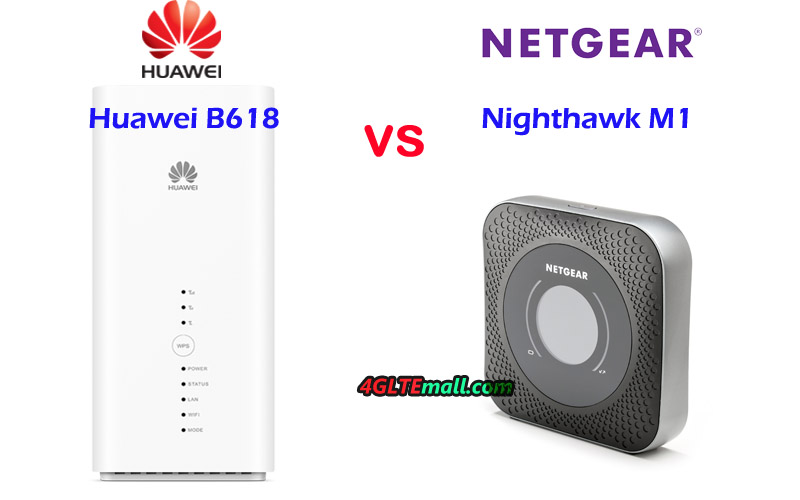
Huawei B618 VS Nighthawk M1 AppearanceIf you are familiar with Netgear 4G Mobile WiFi routers, you may get to know Netgear Nighthawk M1 mobile hotspot router. As the upgraded model from Netgear AC810S mobile router, the Nighthawk LTE mobile hotspot router adopted a new design different from the predecessors in Aircard series. On the front, there is a 2.4-inch screen in round shape with two LED indicators to show the battery and signal status. It looks cool in black color and can be handed in one hand, but it’s thicker than a normal 4G pocket WiFi router. It’s a mobile WiFi router which can be taken outdoor and work on the go.If you had used Huawei E5180 LTE Cube, you will not feel strange about the Huawei B618 Router design. Unlike a traditional 4G WiFi router, the Huawei B618 is in a shape of a cube and in white color. When it stands at your home, you may though it’s a kind of fashion furniture actually its function is a WiFi router with Ethernet port. The body of Huawei B618 is much larger than Nighthawk M1 but it’s stationary router without battery. It has to work with power adapter.
Huawei B618 VS Nighthawk M1 InterfacesAs a mobile WiFi router, the Nighthawk M1 mobile hotspot router could be used at home or for outdoor activities. In the display, it would show the connection status. The power button is on the top edge side while on the opposite side locates the USB ports and an Ethernet port. It’s the world’s first LTE Advanced pro mobile hotspot with Ethernet port. The back cover could be opened and the battery is removable for exchange or inserting the SIM card. The SIM Card in Micro SIM size could be used.Unlike the Nighthawk M1 router, the Huawei B618 has no display, on the front, there are few indicators for Signal strength, power, status, LAN, WiFi and mode. The WPS button is below the signal indicators. On the back, two connectors for external antennas are covered by a small cap and the power button is below the antenna connectors. Below the power button, there is one USB port and two Ethernet port & one Telephone port available. One of Ethernet ports is for LAN and the other is for both LAN & WAN. And the power plug is available for an adapter. Like the Huawei B525 modem, the SIM card slot is at the bottom with the reset button.
Netgear Nighthawk M1 VS Huawei B618 Specs ComparisonFrom the appearance, we can see the Nighthawk M1 and Huawei B618 router are both LTE WiFi routers with Ethernet port and SIM card slot. The Nighthawk M1 is portable for outdoor use while the Huawei B618 CPE is mainly for indoor use. Then let’s have a comparison of Nighthawk M1 Specs and Huawei B618 Router Specs:
Model Netgear Nighthawk M1 Huawei B618 Product type LTE Mobile WiFi Hotspot with Ethernet port LTE WiFi Router with Ethernet Port Category LTE Cat.16 LTE Cat.9/ Cat.11 Chipset Qualcomm MDM9x50 HiSilicon Balong 750 Data rates DL 1Gbps/UL 100Mbps DL 600Mbps/UL 100Mbps Supported 4G LTE frequency bands - Telstra Nighthawk M1: Band 1/3/7/8/28 - AT&T Nighthawk M1: Band 1/2/3/4/5/7/12/29/30/66 - Hong Kong Nighthawk M1: LTE Band 1/3/8/20/29/30/38/40/41 Huawei B618s-22d: Band 1/3/7/8/20/38 Huawei B618s-65d: 1/3/5/7/8/28/40 WLAN 802.11a/b/g/n/ac, dual-band 2.4GHz & 5GHz 802.11a/b/g/n/ac, dual-band 2.4GHz & 5GHz Max supported users 20 users 64 users MIMO 4 X 4 MIMO 4 X 4 MIMO Connector for external antenna Two, TS-9 jacks Two, TS-9 jacks Buy Antenna Netgear Nighthawk M1 Antenna Huawei B618 Antenna App management Netgear Aircard APP Huawei Hilink APP SIM Size Micro SIM Micro SIM Battery Removable, 5040 mAh NO Dimensions 105.5 x 105.5 x 20.35 mm 95 × 95 × 208mm Interfaces * On port for LAN port(RJ-45) * 1 x USB 2.0 port * 1 x USB 3.0 port * 1 x LAN port(RJ45) * 1 x LAN/WAN port (RJ45) * 1 x telephone port(RJ11) * 1 x USB 2.0 port Datasheet Netgear Nighthawk M1 Datasheet Huawei B618 Datasheet User Manual Netgear Nighthawk M1 Manual Huawei B618 User Manual Other features 4 band CA, JumpBoost DHCP Server, DNS RELAY and NAT, VoLTE, IPv4 /IPv6 dual stack Firmware download Nighthawk M1 Firmware Huawei B618 firmware Driver Nighthawk M1 Driver Huawei B618 driver Reviews Netgear Nighthawk M1 AT&T Review Huawei B618s-22d Review Price/USD 459.00USD 449.00USD
Huawei B618 VS Nighthawk M1 Speed Test[embed]https://youtu.be/bRuIdlL9hp0[/embed]
SummaryFrom the specs table, we can see that Netgear Nighthawk M1 Router is more advanced with the support of LTE Category 16, which could achieve downloads speed up to 1Gigibit/s. The Huawei B618 download speed is also very aggressive for up to 600Mbps with the support of LTE Cat.11. They both have two variant models for different network providers. The ATT Nighthawk M1 is mainly for North American areas while the Telstra Nighthawk M1 could be used in Australia, Asia, Europe and the Middle East, but may work only on 3G if travel to North Americans. The Huawei B618s-22d and B618s-65d cover the same areas as Telstra Nighthawk M1, but the different LTE bands are especially for some network providers.Regarding the applications, the Nighthawk M1 Mobile Hotspot router has a removable battery which could let M1 work on the go and the large battery could provide the JumpBoost function to charge other devices like a mobile power bank. The Huawei B618 is mainly for indoor use at home or in office due to the limit of the power supply. And the size of Huawei B618 is inconvenient to take outside. As a stationary router, the Huawei B618 provides more practical functions for users. Many functions can’t be found in Nighthawk M1. Anyhow they both can be managed through the APP from a smartphone. It’s cool and user-friendly.Regarding the price, the price of Nighthawk M1 and Huawei B618 are both at the high range now since they are latest new. As time goes, the price would be down but not expect too much. If you want to buy a Huawei B618 router or Nighthawk M1 mobile hotspot, consider your applications and the functions, and then make your decision. You will never get disappointed by the two LTE-A pro devices.Sourcing from https://www.4gltemall.com/blog/netgear-nighthawk-m1-vs-huawei-b618/ -
Huawei E5787 VS Netgear Aircard 790s
If you had our blog about Netgear Aircard 790s, you may know the Aircard 790s was the world's first 4G LTE mobile hotspots with a touchscreen, which makes it a very attractive mobile pocket router. Huawei also presented a new 4G Mobile Hotspot with the touchscreen, and the model is Huawei E5787, also named Huawei Mobile WiFi Touch. If you are looking for a 4G mobile router with a touchscreen, the Aircard 790 and Huawei E5787 could be considered. However, someone may ask: what's the difference between Huawei E5787 and Netgear Aircard 790s? Which one is better to buy? In this article, we will review the difference between the Aircard 790s and Huawei E5787, including appearance, interfaces, specs, and other features to find the answers.
Huawei E5787 VS Netgear AC790S Appearance
Like other Netgear LTE mobile routers, the Netgear Aircard 790s has a 2.4-inch touchscreen with two buttons at the side of the screen. The two buttons are “Home” and “Back”. The Aircard 790s may have Telstra logo around the corner. The power button is on the top edge side while the USB3.0 port and external antenna connectors are located at the opposite side. The back cover could be opened and the battery is removable for exchange. And Micro SIM card slot is available after removing the battery.
The latest Huawei E5787 also has a 2.4 inch touchscreen but no button on the front. The Huawei logo is below the screen. Like Netgear 790s, the power button is also on the top side, and the USB 3.0 and connectors for external antennas are available on the other side. The back cover could be opened and the battery is also removable. The difference is that the two connectors in the Huawei E5787 are located together and covered by a cap. The Aircard 790s antenna connectors are located at two sides of the USB port. Huawei E5787 also uses Micro SIM card size.
Netgear Aircard 790s VS Huawei E5787 Specs and features
From the appearance, we can see the two 4G LTE Routers are very similar. Then let’s check the Huawei E5787 specs and Netgear AC790S specs to see the specs difference in the table:
Model Huawei E5787 Netgear Aircard 790s Product type LTE Mobile Hotspot LTE Mobile Hotspot Category LTE Cat.6 LTE Cat.6 Chipset HiSilicon LTE Cat6 Chipset (Cortex A9 Processor) Qualcomm MDM9230 Data rates DL 300Mbps/UL 50Mbps DL 300Mbps/UL 50Mbps Supported 4G LTE frequency bands * Huawei E5787s-33a: Band 1/3/5/7/8/20 * Huawei E5787Ph-67a: Band 1/3/5/7/8/28 B1, B3, B7, B8, B28 WLAN 802.11a/b/g/n/ac, dual-band 2.4GHz & 5GHz 802.11a/b/g/n/ac, dual-band 2.4GHz & 5GHz Max support users 10 users 15 users MIMO 2 X 2 MIMO 2 x 2 MIMO Connector for external antenna Two, TS-9 jacks Two, TS-9 jacks Buy Antenna Huawei E5787 external Antenna Aircard 790s External Antenna App management Huawei Hilink APP Netgear Aircard APP SIM type Micro SIM Micro SIM Battery Removable, 3000mAh Removable, 2930 mAh Dimensions 109.00 x 58.00 x 7.50mm 110 x 68 x 15 mm Ethernet Port No No Datasheet download Huawei E5787 Datasheet Netgear AC790S Datasheet User Manual Huawei E5787 Manual Netgear Aircard 790s manual Other features 2 band CA 2 band CA Reviews Huawei E5787 Review Netgear Aircard 790s review Price 269.00USD 229.00USD Summary
From the specs comparison, we can see the Huawei E5787 Mobile Hotspot and Netgear Aircard 790s has almost same specs features. The main difference is on the variant models. Like other Huawei LTE hotspots, Huawei E5787 also has many variants for various network providers. LTE frequency bands worldwide. The Netgear Aircard 790s does not have many variant models. As we know, there is only EU version and Australia version. Then if you would like to have a mobile network, the Huawei E5787 may be better. However, if your network provider's network frequency bands can be supported by Aircard 790s, and the Netgear AC790S would be better for you because of the same specifications, the Netgear 790S has a better price than that of Huawei E5787.
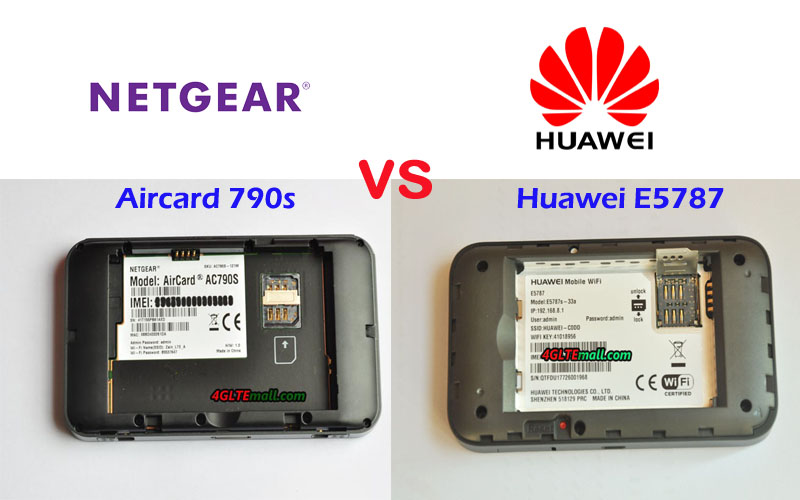
-
TP-Link Archer MR400 AC1350 Router Review
TP-link Archer MR400 is a powerful 3G/4G router from TP-Link, designed for users who need high data transfer speed in a WiFi network. This model combines support for most popular 3G and LTE mobile Internet standards with a high-speed dual-band WiFi module that supports the 802.11ac protocol. The line of TP-Link Archer wireless routers has won great popularity among users due to the low price and excellent technical characteristics. The Archer MR400 is the older model of TP-Link 3G/4G routers that is ideal for use in an office, apartment, country house, or any other place where you need to provide quick access to the mobile Internet for a large number of wireless devices.
TP-Link Archer MR400 Specifications
Due to the configuration of the MIMO 3x3 antennas in the 2.4 GHz band and the MIMO 2x2 in the 5 GHz band, the Archer MR400 provides a total transfer rate of up to 1350 Mbps (450 Mbps in the 2.4 GHz network and 867 Mbps in the 5 GHz). For comparison: the predecessor Archer MR200 model is limited to a speed of 300 Mbit/s in the 2.4 GHz network and 433 Mbps in the 5 GHz network.
A high-performance WiFi module supports up to 64 users. It is recommended to connect to the 2.4 GHz network equipment that does not need high speed, as well as obsolete devices that do not support the 802.11ac protocol. At the same time, it's best to connect the demanding bandwidth to the 5 GHz network: televisions, game consoles, wireless storage devices, etc. Using the innovative MU-MIMO technology allows us to unleash the full potential of the WiFi 802.11ac standard and provide the maximum data transfer rate with simultaneous connection to a network of several clients.
Archer MR400 is made in a stylish black case and supports the wall mount. A WPS button is also available on the back of the LTE router for quick connection of WiFi devices.
The TP-link router is equipped with one SIM card slot and supports all common cellular standards in Europe, including FDD-LTE in the frequency ranges of 800, 1800 and 2600 MHz, TDD-LTE in the 2600 MHz band and 3G at 900 and 2100 MHz. The maximum speed in 4G networks is 150 Mbit/s for reception and 50 Mbit/s for transmission (LTE Cat. 4). The MR400 Router also supports 2G-Internet and other broadband Internet standards used in different countries of the world.
To receive a mobile signal, the kit includes two small detachable LTE antennas with a small gain. In the case of a weak or uncertain input signal, more powerful directional antennas (sold separately) can be connected through the SMA connectors to the MR400.
TP-Link Archer MR400 Interfaces
With the router, the adapters of changing Micro to Standard or NANO to Standard are included, which allow installing a SIM card of any format into the router. In addition to the SIM card slot, there are 4 Ethernet ports (10/100 Mbps) on the rear panel: 3 LAN ports and one switchable WAN / LAN port. Thus, the router can be connected to the Internet not only through a mobile connection but also through a normal cable from the provider. The drawbacks of the model include the absence of gigabit ports, which reduces the maximum speed of data exchange between wired and wireless devices in the network.
TP-Link Archer MR400 Settings
The configuration of the router is carried out via the web interface or the proprietary TP-Link Tether application. At the disposal of users, there are various settings of mobile connection and local network. The Archer MR400 administration panel contains all the parameters familiar to home routers, as well as some additional functions: two guest networks (2.4 and 5 GHz), parental control, QoS (bandwidth control), dynamic DNS (DynDNS, NO-IP), VPN (PPTP, L2TP, IPSec), NAT, IPv6, DHCP, protection against DoS attacks, filtering over IP and MAC addresses, etc.
The router is very easy to manage and does not require special skills for customization. In most cases, it is enough to install a working SIM card in the router and connect it to the power network: the mobile Internet and the WiFi network will work by themselves. With the Archer MR400, you can connect a large number of wireless devices to the 3G/ 4G Internet and ensure the maximum speed of data exchange in the WiFi network.
General Review of Archer MR400 Specifications:
- Frequency ranges:
- FDD-LTE B1/B3/B7/B8/B20 (2100/1800/2600/900/800 MHz)
- TDD-LTE B38 / B39 / B40 / B41 (2600/1900/2300/2500 MHz)
- 3G: DC-HSPA + / HSPA + / HSPA / UMTS B1 / B8 (2100/900 MHz)
- 2G: EDGE / GPRS / GSM (850/900/1800/1900 MHz)
- Number of SIM cards: One
- LTE data transfer rate up to 150 Mbps (download) and up to 50 Mbps (upload)
- WLAN Standards: WiFi 802.11a/b/g/n/ac
- Frequency ranges: dual-band 2.4 GHz, 5 GHz
- Data transfer rate of WiFi: up to 867 Mbps in the frequency range 5 GHz, up to 450 Mbit/s in the frequency range of 2.4 GHz
- Wireless signal power (EIRP): <20 dBm (2.4 GHz), <23 dBm (5 GHz)
- Antennas:
- 3 built-in WiFi antennas (2 x dual-band antennas 2.4 and 5 GHz, 1 x 2.4 GHz antenna)
- 2 removable external 4G LTE antennas
- Ports and Interfaces
- 3 x LAN (10/100 Mbps)
- 1 x LAN / WAN (10/100 Mbps)
- 1 x standard SIM slot
- 2 x SMA connector
- WiFi Security: 64/128-bit WEP, WPA / WPA2, WPA-PSK / WPA2-PSK, WPS
- Power: 12V, 1.5A
- Certificates: CE, RoHS
- Operating temperature: from 0 ° С to + 40 ° С
- Storage temperature: from -40 ° С to + 70 ° С
- Permissible humidity: from 10% to 90% (without condensation)
- Size (without antennas) 202 x 141 x 33.6 mm
- Package Content:
- Archer MR400 router
- 2 removable LTE antennas
- Power plug
- Ethernet cable
- Warranty card
- Quick setup guide
- Frequency ranges:

